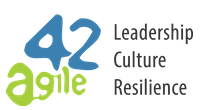What does it mean for a team to be truly self-organised?
I love the way Claudette Moore sums up what a self-organised team is all about:
Self Organised is the capacity you have as a team to arrange yourself in such a way that you can effectively and happily complete tasks that you have committed to within the constraints that a company puts on you. – Claudette Moore
In my opinion, a typical self-organised team needs the time and support to mature. It is not an easy process, and can’t be forced. During the process there will be laughter and tears, conflict and collaboration. This is all worth it in the end, as without going through this process, all you have is a framework. Ultimately, to become a high performance team, this path needs to be followed. The results however, are well worth it – a team that is highly collaborative, cross skilled, able to solve complex problems, remove their own impediments, delivering high value outcomes, focused and driven to achieve results and true value.
In my opinion, for a team to become self-organised, they need the following:
-
- Framing / Boundaries in which they can work. It’s important to include managers in this process so that the managers understand that a self-organised team does not make them redundant.
-
- Trust among each other and the Scrum Master.
-
- Goals and a vision not only for the product they are delivering, but for each sprint as well.
-
- Measurement – you need to know where you are in order to see if you are improving. Be careful with this one, using the wrong metrics can destroy a team.
-
- Encouragement to fail early to maximise learning. This behaviour should be supported by the business and not punished.
-
- Support and direction by business and Scrum Master so that they are encouraged to solve their own problems and not dictated solutions.
-
- Autonomy to decide not only how but who.
Team Maturity
From my perspective, a new team will go through four levels of maturity. It is important to understand at what level the team is, in order to guide appropriately.
I use the analogy of growing up from infancy to adulthood to describe these four levels:
-
- Infancy
-
- New to Agile / Scrum.
-
- Haven’t actually adopted scrum in a working environment yet
-
- In a dream like state after been sold all the pros of Agile and in theory it sounds wonderful and easy and their lives will be trouble free.
-
- The trainers are like the parents, teaching their new borns and the new borns just accept everything they are fed.
-
- Infancy
-
- Toddler
-
- Might still need to be micromanaged, require work to be allocated, decisions to be made for them.
-
- Not willing or have the courage to challenge peers or managers. Happy to still just do as they are told.
-
- Blaming external forces for non delivery and not finding ways to improve as a team (specifically retro’s).
-
- Focusing on personal delivery and not the delivery of the team.
-
- Don’t own or take responsibility for delivery.
-
- Think being busy working on a bunch of stuff, means they are working hard.
-
- Not focused on priority, but still influenced by who shouts the loudest.
-
- Not very disciplined.
-
- Still not able to see the real value of Scrum, no real adoption yet.
-
- Level of re-work might still be high.
-
- Toddler
-
- Adolescence
-
- Able to organise as a team, most of the time, in terms of making decisions on how the work will be completed.
-
- Start to realise that starting too many things and not finishing, isn’t the best way to work.
-
- Still focused on individual performance. Collaboration level still not great.
-
- Start to challenge the process and Product Owner.
-
- Start to reflect internally and not just externally.
-
- Starting to focus on value based priority.
-
- Able to deal with minor obstacles and start to solve their own problems without waiting for guidance.
-
- Taking more responsibility, but will still look at someone or something else to blame.
-
- Level of discipline is improving.
-
- Starting to see the value of Scrum but adoption is shallow.
-
- Adolescence
-
- Adult
-
- Honest with each other, challenge each other, trust each other.
-
- Able to reflect internally and find opportunities for improvements as a team and the way they work together.
-
- Solve own problems.
-
- Work as a team, level of collaboration high, and focus on finishing important work first.
-
- Level of discipline high.
-
- Able to challenge the business and are focused on delivering value for the customer.
-
- Focused on quality and not quantity.
-
- Understand the value and adopted Agile technical practices like continuos integration, BDD (Behavioural Driver Development) , TDD (Test Driven Development), Automated testing etc.
-
- Agile adoption is much deeper.
-
- Adult
So as I said, the way a Scrum Master would interact and help a team develop, all depends on which level they are.
What can you do as a Scrum Master to influence self-organisation?
-
- Identify at what stage the team is at and act accordingly. Let the team develop at their own pace.
-
- Model behaviour expected from the team and by leaders.
-
- Coach managers to become leaders.
-
- Make sure the team understands their boundaries.
-
- Have values and principles that you and the team stand by.
-
- Focus on the core principles of Agile and ensure that the actions of the team supports these principles.
-
- Keep things simple, always review what you and the team are doing. Keep looking back at the basics.
-
- Encourage the team to try.
-
- Ask powerful questions that make the team think rather than offer solutions e.g.
-
- Is there another way?
-
- Can you explain that to me?
-
- How can we test that?
-
- How can you help in the delivery of the Sprint?
-
- Ask powerful questions that make the team think rather than offer solutions e.g.
-
- Support the team and their decisions and protect them from the business or anything that attempts to derail them.
-
- Coach the Product Owner and ensure they understand their boundaries.
-
- Coach the business in terms of what Agile means, and what a self-organised team means.
I hope you are able to find some value in this and I welcome any feedback or questions.

